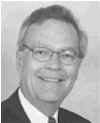|

|
|
No
More Free Rides:
Toll
Roads in Virginia
The
news last spring that Virginia plans to add two toll
lanes to a 14-mile stretch of the Capital Beltway
actually continues a long tradition in the Old
Dominion. More than 300 years ago, in 1772, the
Virginia legislature authorized what was probably
the first toll road in America – a highway over
the mountain between Jennings Gap and Warm Springs
in Augusta County. Revenue collected from travelers
was to be used to maintain the road but also
“towards building housing ... for reception of the
poor sick resorting to the said springs.” (See
"The History of Roads in Virginia,"
Virginia Department of Transportation.)
In
fact, roads such as the Little River Turnpike from
Annandale to Jermantown in northern Virginia or the
Blue Ridge Turnpike (now Rt. 231) from Gordonsville
through Fishers’ Gap to New Market derived their
names from their status as toll roads in the 18th
and 19th centuries. Early toll gates were
turnstiles. They were made of two crossed bars
pointed at their outer ends and turned on a vertical
bar or pole -- a pike in the vernacular of the time.
The
turnpike era, in Virginia, which was funded
primarily by private companies, lasted only from the
late 18th century until the Civil War, when many
toll roads were taken over by counties. As the
Confederate and Union soldiers destroyed bridges and
roads in the fighting, the private toll system
collapsed. Tolls
had never quite covered maintenance or operating
costs, and while the roads were extensive, the
system was financially weak.
Today,
Virginia collects tolls on seven different highways
or bridges in northern Virginia, central Virginia
and Hampton Roads. These include the Dulles Toll
Road and Dulles Greenway in Fairfax and Loudoun
counties; the Downtown Expressway and its extensions
from Richmond to central Chesterfield County; the
Chesapeake Bay Bridge-Tunnel; the George P. Coleman
Bridge over the York River; the Chesapeake
Expressway that connects Chesapeake with North
Carolina and the Outer Banks and the Pocahontas
Parkway that connects I-95 in Chesterfield County to
I-295 in Henrico County.
Tolls
are gathered on close to 100 miles in Virginia.
While this may seem a small percentage of the
Commonweath’s roadways, times could be changing.
The newest concept in traffic control is HOT
(high-occupancy toll) lanes. These are HOV lanes
that also carry single drivers, charging tolls that
vary according to driving conditions. For example,
Minnesota launched HOT lanes on a 10-mile stretch of
I-394 from the western suburbs to Minneapolis on May
16. The maximum toll charged, when traffic is
heaviest, is $8.
The
high-congestion toll doesn’t seem to deter drivers
from buying the electronic tags to use the system.
According to an article in Construction Equipment
Guide, 3,000 drivers were prepared to use the
lanes when they opened. (See "Toll
Roads Becoming 'HOT' Funding Topic.")
Speaking
of those tags, which now can be seamlessly used from
Virginia to Massachusetts, the technology is
actually more than 30 years old, according to the
June 22, 2005 issue of Tollroads News.
General Electric developed the first radio-frequency
toll transponder. Buses, staff vehicles and
emergency service vehicles used them first on the
Golden Gate Bridge in San Francisco in 1972. They
were mounted under the vehicle and communicated via
an antenna in the pavement. However, the early
equipment was the size of bricks and cost hundreds
of dollars. It wasn’t until the technology became
more rugged, smaller and cheaper that electronic
toll systems were introduced to the public in 1988
and 1989 in Dallas, Tex., Norway and Italy almost
simultaneously.
In
Virginia, today, almost one million drivers have
electronic Smart Tags, the state’s version of the
E-Z Pass used on toll roads in the northeast
corridor, reports the Virginia Department of
Transportation. There are 10.5 million electronic
toll transactions a month in the state and 75
percent of all toll transactions are electronic
transactions.
Still,
if trends continue and more of the Commonwealth’s
byways become toll roads, we may risk the return of
shunpiking. Shunpiking is the practice of searching
out another route to avoid paying tolls. In fact, a
well-known example of shunpiking occurred here in
the 1950s, as a kind of boycott. When the state
bought the privately-run James River Bridge in
eastern Virginia, it increased tolls in 1955. There
was a public outcry from both private drivers and
businesses, due to no visible improvements in the
road. The head of the Smithfield Packing Company,
producer of Virginia’s famous hams, ordered his
trucks to take a different route and cross the river
at a cheaper facility.
Tolls,
however, remained on the bridge until 1975. (See
Wikipedia, "Toll
Roads.") So, we may have come full circle
as private companies, some as far away as Australia
and Ireland, now vie for the right to collect the
bounty from HOT lanes and other tolls from the
Capital Beltway in northern Virginia to the
Pocahontas Parkway that links Chesterfield and
eastern Henrico counties. Is a return to shunpiking
far beyond?
NEXT:
Limestone and Karst: Caves in Virginia.
--
July 25, 2005
|
|
